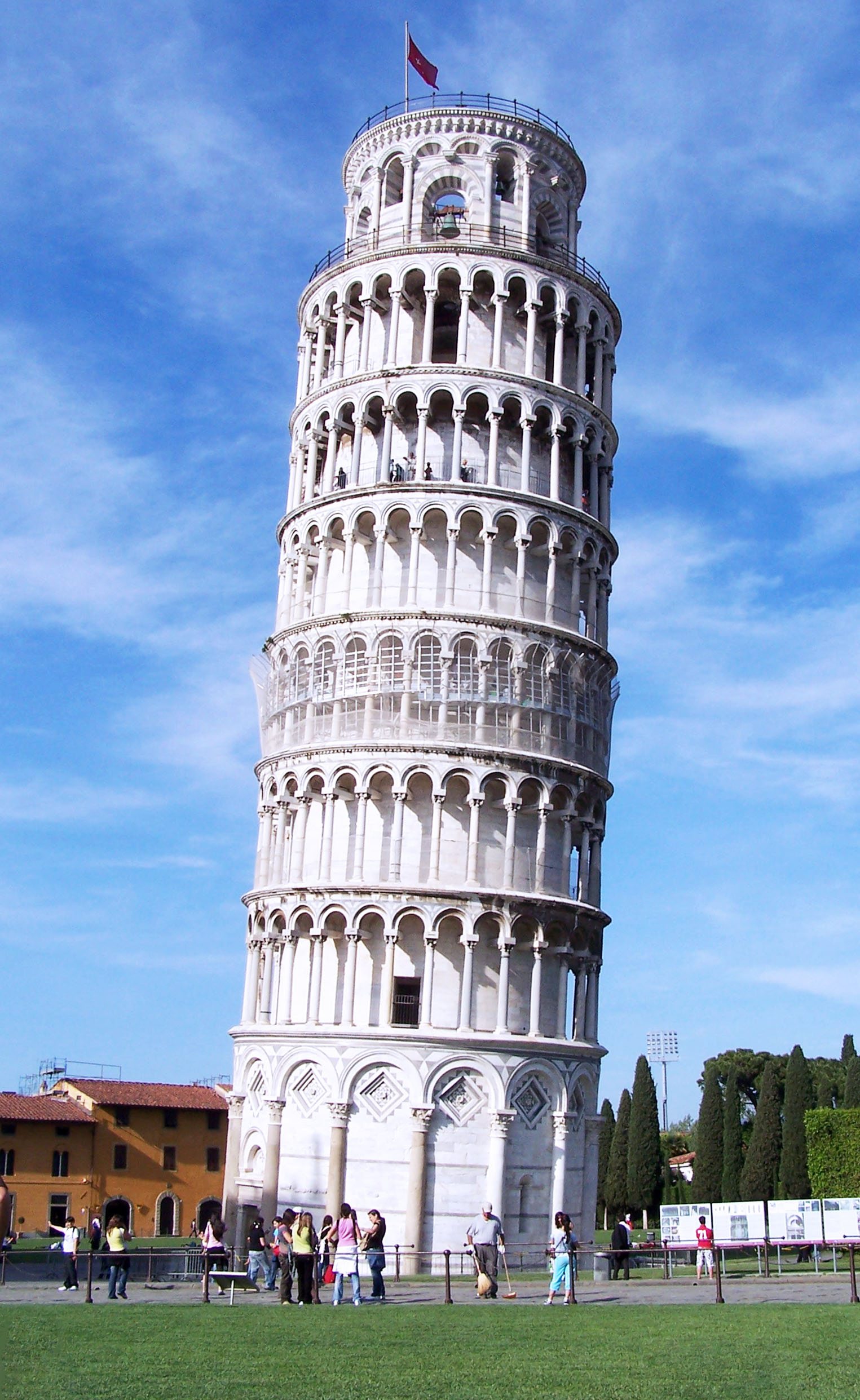The Leaning Tower of Pisa is more accurately referred to simply as the bell tower, or campanile. The Pisa tower is one of the four buildings that make up the cathedral complex in Pisa, Italy, called Campo dei Miracoli, or Piazza dei Miracoli, which means Field of Miracles.
The first building constructed at Campo dei Miracoli, Pisa, was the cathedral, or Duomo di Pisa, which rests on a white marble pavement and is an impressive example of Romanesque architecture. The next building added was the baptistery just west of the dome. Then work on the campanile began. Before the work on the bell tower was completed, the cemetery, Campo Santo, was built.
The Leaning Tower of Pisa was designed as a circular bell tower that would stand 185 feet high. It is constructed of white marble. Construction began during the summer of 1173. The tower began to sink after construction had progressed to the second floor in 1178. This was due to setting the 10 foot deep foundation in weak, unstable soil. Construction was subsequently halted for almost a century, because the Republic of Pisa was almost continually engaged in battles with Genoa, Lucca and Florence. This allowed time for the underlying soil to settle. Otherwise, the tower would almost certainly have toppled.
In 1272, construction resumed under Giovanni di Simone, architect of the Camposanto. In an effort to compensate for the tilt, the engineers built upper floors with one side taller than the other. Because of this, the tower is curved. Construction was halted again in 1284 when the Pisans were defeated by the Genoans in the Battle of Meloria.
The seventh floor was completed in 1319. The bell-chamber was finally added in 1372. There are seven bells, one for each note of the musical major scale. The largest one was installed in 1655.
Many ideas have been suggested to straighten the Tower of Pisa, including taking it apart stone by stone and rebuilding it at a different location. In the 1920s the foundations of the tower were injected with cement grouting that has stabilized the tower to some extent.
The tower was closed to the public on January 7, 1990, after more than two decades of stabilization studies. At that point, the tower had reached a precarious angle of 5.5 degrees. The bells were removed to relieve some weight and cables were cinched around the third level and anchored several hundred meters away. The solution chosen to prevent the collapse of the tower was to slightly straighten it to a safer angle by removing 1,342 cubic feet of soil from underneath the raised end. The tower was straightened by 17.7 inches, returning to its 1838 position, reducing the angle of lean to a bit less than 4 degrees. After a decade of corrective reconstruction and stabilization efforts, the tower was reopened to the public on December 15, 2001 and was declared stable. In May 2008, engineers announced that the tower had stopped moving for the first time in its history and that it would be stable for at least 200 years.
The legendary tower is not only stable, but in the last 20 years, it has lost an additional 1.6 inches of its tilt, thanks to the stabilization work. Those who might be concerned that Pisa will lose its iconic landmark need not worry. If the reduction of the tilt continues at its present rate, the tower will not be standing fully vertical for another 2,500 years!





